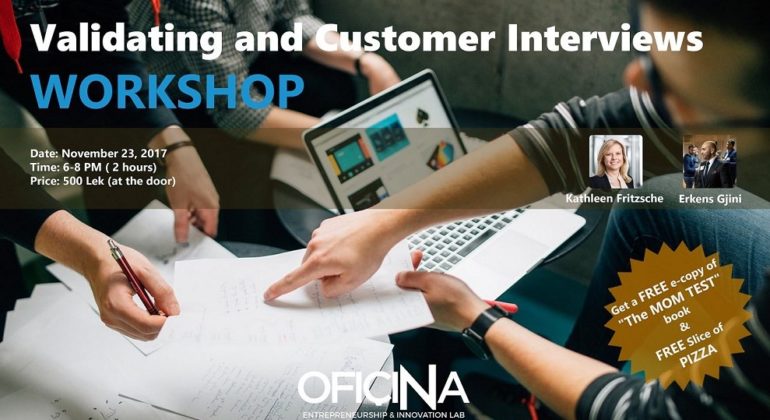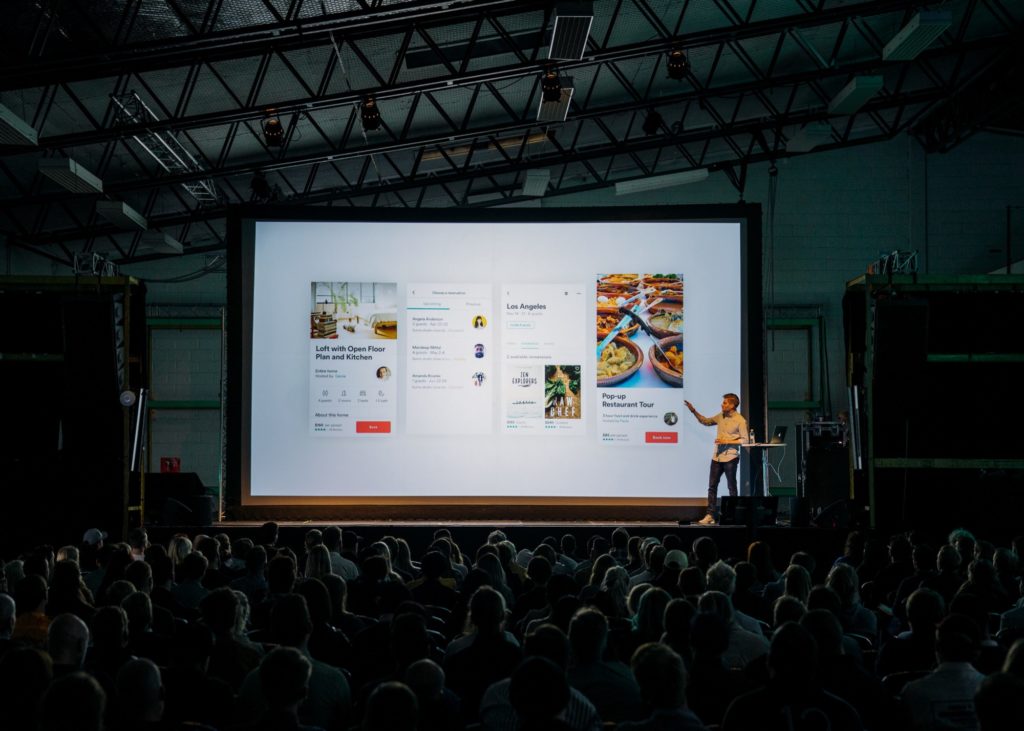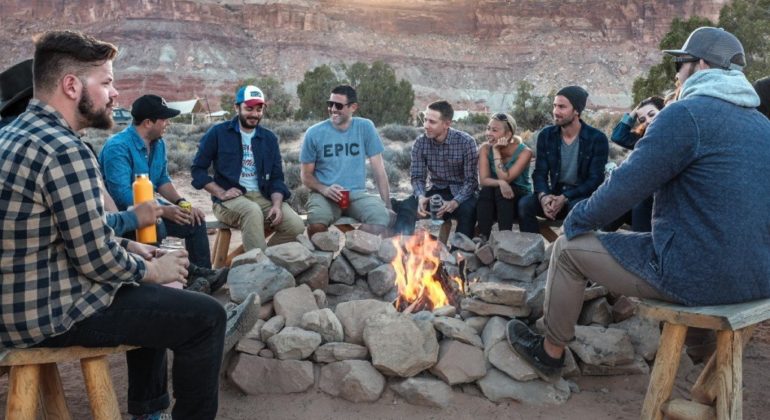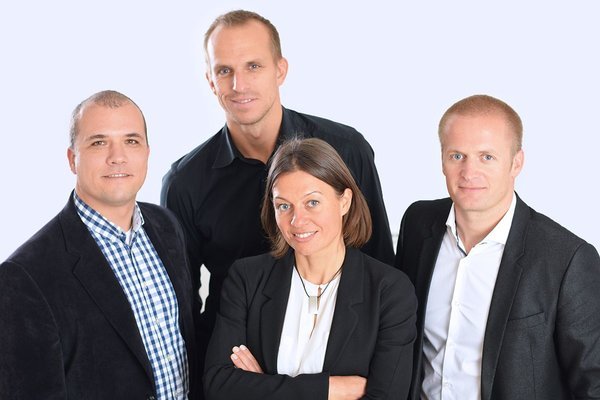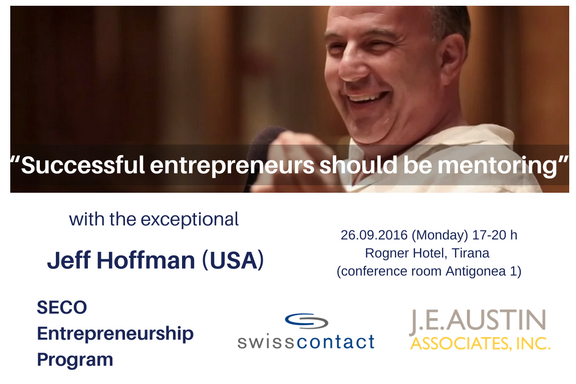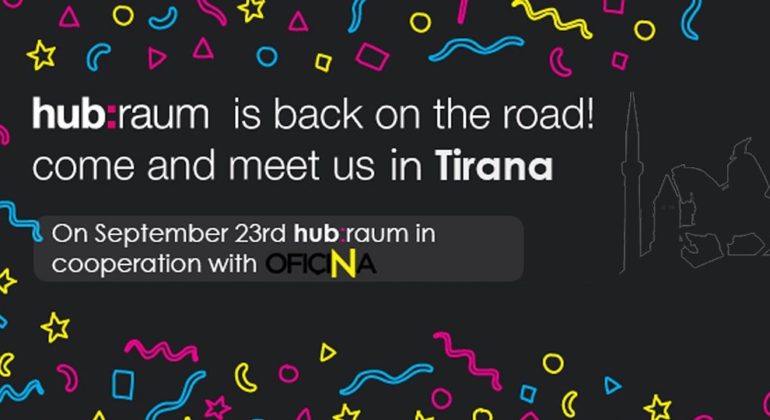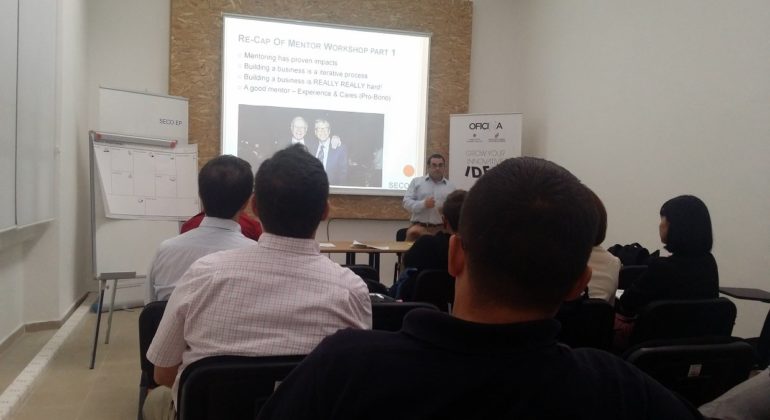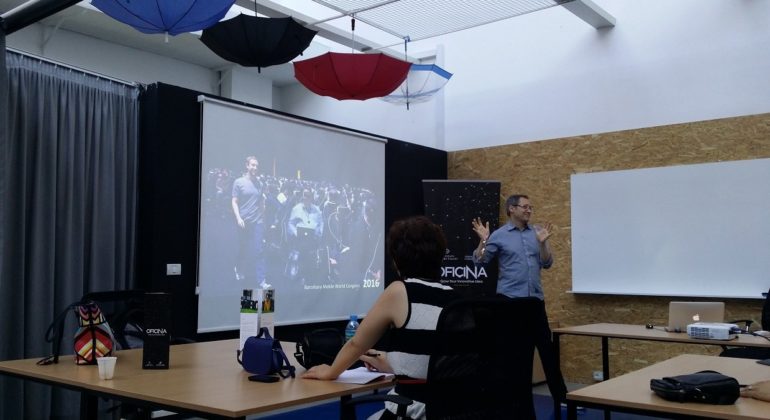This is a guest blog by our Entrepreneur in Residence Michal Bohanes @mbohanes.
***
Supercharge your own learning and networking by creating an email list for startups in Albania.
Who is this blog post for: Anyone in the Albanian startup community. Either you are working full time at a startup (congratulations!) or you have a full time job and work on a project on the side. Either way, you are trying to get something off the ground.
Imagine an entrepreneur, let’s call him Arber. Arber is starting a business selling personalised gifts online. He has a few thousand email addresses from potential customers and he would like to do some good email marketing with this list. He has never done any email marketing. He doesn’t know much about it — should he just send through his personal email? Or are there tools he can use?
credit: Mike Wilson
Now imagine that Arber has access to a group of 250 experienced entrepreneurs. He simply sends an email to an email list with these 250 people on it, asking if there’s someone who has experience in email marketing and who could spend an hour with Arber on the phone giving him some instructions.
A few hours later, he checks his inbox (yes — Arber works productively and only checks his inbox three times a day). And there’s seven people who responded:
- Three of them offering to speak to Arber
- Two saying that they are interested as well and that they would like to be included in the learning session
- One sending a link to an email marketing agency that they have worked with and recommend
- One sending a link to a book and a series of blog posts where Arber can learn about email marketing
Does that sound like too good to be true? Well, this is daily life in most startup ecosystems. And it’s probably the single most important thing for my work in London.
In London, I’m part of a group called the ICE list. ICE stands for International Conclave of Entrepreneurs. You can join if you are the founder of a business, two people who are on the list recommend you, and if you participate in a trip with a group of ICErs. Once you’re on the list, you get access to 250 startup founders, investors, and tech industry executives.
This is how I get introductions, how I learn new things, how I hear about interesting events — and how I came to be in Albania: Someone I know posted on the list in January “Hey, some people in Albania are looking for an Entrepreneur in Residence. Get in touch if interested.”
I can’t overemphasise how important it is to have such a group. If there’s anything that will turbocharge the Albanian and Balkan startup ecosystem in its learning and development, this is it.
If there’s anything that will turbocharge the Albanian and Balkan startup ecosystem in its learning and development, this is it.
So, how do you build such a community?
You will say — Sure, set up an email list, easily done. What’s the big deal?
Well, this is actually harder than it sounds. Why? It requires quite a bit of trust. Why?
- You are often putting your ignorance on display. There’s nothing wrong with ignorance. We all are ignorant about 99.9% of everything. But not always are we comfortable saying this publicly. If you don’t ask for help, you won’t learn. So you need to be vulnerable sometimes and ask for help.
- People need to feel that there is a give and take. If you help others but never receive help in return, you will disengage. If there are free riders on the list, their presence will slowly spoil the experience for everyone else.
- When you provide introductions, you want to make sure that the person who gets introduced will not do or ask for something inappropriate. It could damage your relationship with your contact.
The trust requirement means that you can’t allow just about anyone to join the list. You can only let in high quality people who will share their knowledge, follow through on their promises, and not embarrass you.
What’s the first step?
The first step is to build a community core. 2–3 people. The ICE list started in 2007 when 3 friends in London, Alex, Peter and Andrew, realised that being a founder was pretty lonely. So they decided to go on a trip together and take a few of their friends along. After the trip, they all stayed in touch through the email list.
Don’t start this alone. Get a friend or two who are as committed to the idea as you are. Consider the email list a little startup in itself. It’s always better to have a co-founder.
Set up the technical solution
It doesn’t really matter which service you use, as long as it’s reliable. The ICE list uses groupspaces.com (£12.99 / month), but you can also use Google Groups as a free alternative (Select group type “email list”). Another good paid option is copyin.com — get in touch with me via Linkedin or Twitter, I should be able to get you a discount. You can initially pay for the service yourselves, and once you have 20–30 good members together, spread the cost out and have everyone pay €10 per year as membership fee. You will be able to pay for the emailing tool and have a bit of extra budget for incidentals.
When a member sends an email to the group alias, all members receive the email in their normal email account. (When a non-member sends an email to it, it bounces and informs them that they are not authorised as senders.)
“Can’t we use Slack or Snapchat or Whatsapp or Instagram or Facebook?”
No. And I’m very serious about this. Don’t be tempted by these services. Do boring email instead.
Why?
- None of these services have good archiving functions. One of the best things about ICE is that you can search for past discussions. ICE is now 10 years old — that’s a real treasure trove of information. At some point, you will remember “ah, we once had this discussion about equity distribution between co-founders, let me look it up” — and you search in gmail, and boom, there it is, a discussion you had 3 years ago. Try THAT on Facebook.
- You can’t send attachments on these platforms. Yea, maybe on Facebook — but it’s a bad user experience. And you can’t search within attachments on Facebook. In Gmail, you can.
- The signal-to-noise ratio is very, very poor on social media. You will get a lot of idle chitchat on them, people sending GIFs and LOLs and emojis and similar stuff. The valuable information will get drowned out.
- You will get distracted. Thousands of engineers in all of these companies are spending their waking hours coming up with ways how to distract you. You may plan to interact with your entrepreneur friends, but you will find yourself, after watching 12 cat videos and clicking on 3 random news stories, wondering where an hour went.
Do not use social media as the main vehicle of the community.
Once you’ve selected your email delivery service, get your 2–3 friends on it. Congratulations. Your community was just born.
For the rest of the article, let’s call your new group CEB (Conclave of Entrepreneurs in the Balkans) — yep, you should aim at going beyond Albania soon — there’s no point limiting yourselves to a 3m market. (Also, come up with a catchier acronym than CEB. ICE is cool (ha!) because you can play around with it with various initiatives — holiday on ICE, Icicles, ICE on fire, whatever)
Establish who is in and who is out
You need to establish who you want on the list. Discuss this in your founding team — it’s an important decision you’ll be making.
The risk is, if you allow people on the list who are too different, you risk losing engagement.
Imagine you’re all startup founders on there and someone on the list asks “what is a startup?”. You’d be rolling your eyes and think “who let that one in?” — Right?
This may sound elitist, but it’s a fact: You need a certain level of common interest and shared experience.
It doesn’t have to be terribly exclusive. Your rule could be that membership is limited to people who
- Are founders — defined as someone who is working more than 15 hours a week on a project that, if they received funding for it, they would quit their full time job for. Their project must be something that, if successful, is profitable and self-sustaining.
- Or who work in senior positions in startups. This allows the second-in-line person to join who has almost as much responsibility as the founder/CEO.
This is just a suggestion. You come up with your own membership criteria. But you need have SOME criteria.
You need a certain level of common interest and shared experience for the list to be successful.
When in doubt, don’t let people in. It’s better to grow slower but maintain quality.
If you are selective, it gives you the advantage that you can reach out to high-profile entrepreneurs who are more ahead than you, the founders of CEB, are. If you can guarantee them that the community are all founders and a trusted circle, you can get the star power, and with it, great knowledge and contacts.
The list will be a convenient excuse to start networking with entrepreneurs you don’t know yet.
Establish the list rules
At some point, you will get behaviour on the list that you’re not happy with and you’ll have to establish some ground rules. For example, on ICE, we started having too many people who were posting their job adverts. This became a bit of a drag — too many “we’re looking for a marketing manager” type emails. Others started to complain, and some said that they are opening ICE emails less, as a result.
So we set up the rule that job postings are not allowed. When someone breaks the rule, we remind them publicly for everyone to see. If they broke the rule despite warnings, we would remove them from the list (hasn’t happened so far).
Don’t be too detailed about the rules — you don’t want this to be too regimented. But do remind people of a few good practices such as:
1. Don’t ask questions that can be easily found online (e.g. “what’s the difference between a patent and a trademark?”)
2. Be specific what you want from people on the list. Eg. asking “I need help starting a business” or “How to advertise on Facebook?” are not good questions to ask because they are so broad. Instead, phrase things in a way that makes it easy for people to respond with a specific offer to help. E.g., in the above cases:
- “I need some advice about which kind of co-founder I need. My own background is X and I wonder if, for my business idea, I need something with skill Y or skill Z.”
- “I have problems understanding how I can use Lookalike Audiences on Facebook advertising. Can anyone who has used this feature jump on the phone with me please?”
- Not only does this make it easier for others to offer help, you also show the group that you’ve done your homework and that you don’t want people to explain the world to you — you only need specific advice.
3. Don’t go fishing for likes or follows. CEB is not your marketing pool but your mastermind group. It’s not respectful to use them as click cattle. There is a fine line here — on the one hand, you want to keep people informed about what you do and get a little bit of support, on the other, you can’t go around asking people to like every picture you put out on instagram. A good compromise here would be that it’s ok to ask for support when you launch a new business or product. These things happen rarely enough. But asking for support on marketing campaigns etc — that’d be a big no-no in my book.
English is the list language
You won’t be surprised to hear me advocating for making the list language English. You will of course be tempted to use Albanian, but I think you should be strict here and consider list postings in Albanian a rule-breaking that can, if repeated, get you banned from the list. Why?
- You want to expand this soon to other countries. I’d much rather have the best 100 people from Albania, Kosovo, Montenegro, Macedonia and Serbia on the list than the best 100 people in Albania alone. The earlier you show yourself open to non-Albanian-speaking audiences, the easier it’ll be to get the best people to join.
- Forwarding threads — imagine someone has a question which leads me (being a member of the list) to think “oh, they are discussing this topic that my German friend knows a lot about, let me ask her.” If the thread up until then is in English, I can simply forward to my German friend and ask her “hey — can you please comment on this and say what they should do?” If the thread is in Albanian, I either have to summarise (which takes time) or use google translate (which can result in gibberish).
- It’s much easier to start with new habits than to break existing ones. This is why it’s not a good idea to start in Albanian with the plan to later change it to English. People will forget that there’s new members on board and it’ll be a struggle to change.
- It builds goodwill in a region where language barriers run along the fault lines of ethnic tensions. You’re looking forward and not back.
- It’ll improve people’s English.
- Albania is such a tiny market — any successful startup has to think beyond the country. No unicorns will get built by serving the local market alone. Speaking English on the list will further instil this globalist perspective.
To reinforce this, I recommend you get some of the best entrepreneurs in Macedonia on the list from the beginning. That way, you’ll have an easier time convincing the most obstinate Albanian speakers that it’s rude to exclude the Macedonians from the conversation.
English is the lingua franca of startups. Speak and write it well.
Have an offline initiation activity, ideally a trip
ICE is ICE because of the offline interaction of the members — largely facilitated by the trips we take. It makes a HUGE difference to know each other in person and spend some quality time together. You’re much more likely to help someone out if you played beach volleyball with them or built a snowman together.
You can’t join ICE if you haven’t been on a trip. ICE does 2 trips per year — a ski trip in March and a summer trip in September.
The first ICE trip I went on was one of the best vacations I ever had — we went to South Africa, did a safari, visited local entrepreneurs, drank wine at vinyards near Cape Town, climbed Table Mountain and swam with sharks (ok I didn’t do that bit). The group were existing members and around 20% newbies. Early stage founders, experienced entrepreneurs, investors, recruiters… all in one big group of 40+ people.
If this sounds expensive, it wasn’t too bad — ICE is so big and influential by now that we regularly attract sponsors for trips — companies with deep pockets who benefit from exposure to a group of ambitious entrepreneurs. Their contributions lower the cost for everyone.
You don’t have to go on trips abroad to build relationships, though. A long Sunday hike in the mountains, a weekend at the beach — there’s plenty of fun activities that you can do on a super low budget. Even a regular evening playing board games will do. But the more time you spend together at once the better: A weekend together is better than 5 evenings in a row.
credit: Phil Coffman
Whatever you do, it should be something that allows you, the founding members, to see if whoever wants to join you has the right personality and mindset — are they generous, positive, helpful, fun to be around? What do they bring to the table?
Avoid activities that minimise interaction (e.g. trips to the cinema or museum). Also just doing drinks in a café isn’t great because it’s such a low-stakes environment — you only sit and talk, and words are cheap. If you travel with someone, however, you get a much better idea of their personality — do they share? Are they good at organising and improvising? How do they react if things don’t go their way?
Do applicants have the right personality and mindset? Are they generous, positive, helpful, fun to be around? What do they bring to the table?
Drinks are better than nothing, of course — and I recommend you do at least a dinner together. But the more actual activities you do together, taking yourselves out of your normal surroundings, the better.
After a trip, you decide on who should be accepted into the group. In ICE, the pre-vetting has been usually done before the trip already, so it’s an exception that someone on a trip won’t get invited to join the group afterwards. We’ve had an instance where a candidate behaved improperly towards a few women on a trip, and we paused his application. He apologised to the women in question and his behaviour was not bad enough to ban him outright, but he had to go on another trip to try again. He behaved well this time and was allowed on the list.
The right mindset on the list: Share and contribute
I once knew a woman who quit her job in risk management in a large bank. I asked her if her boss already had a replacement for her. He didn’t. I told her that a friend of mine had the perfect profile and was looking for a job. What a lucky coincidence, I thought! I was excited to be able to help my friend out and that the leaver’s boss would fill a position without paying expensive headhunter fees. Everybody wins.
I asked the job leaver if she could do an intro to her boss. She told me “why would I do this? I don’t get anything out of this.” I said that her ex boss would be grateful to her and my job hunting friend even more so. She replied that she didn’t know my friend and that she’d be taking a risk to her reputation if my friend ended up being a bad fit.
This story is meant to illustrate the exact opposite of what you need on the list. You need people who enjoy helping out — with their contacts, their expertise, their well-informed opinion. When I heard that the woman was leaving her job, my pulse jumped! I was so happy that I could possibly help my friend out. (Sorry to bring myself in as an example of virtue — but this is the kind of attitude you need to have on the list.)
One of the reasons I enjoy working in technology so much is that people are so incredibly helpful. It’s an attitude that permeates the entire sector. Asking someone I know for an introduction, picking someone’s brain about a topic they know a lot about — all this is daily bread in the London tech scene. And ICE reflects this — Here’s a random list of topics on ICE in 2017
- 41 “talent available” emails: People recommend non-ICE friends who are looking for jobs. Because great people are always in short supply, we encourage ICErs to recommend them. In 2016, over 14% of these recommendations have directly resulted in a job, which saved the hiring companies a combined £125,000 in recruiter’s fees.
- A question from someone about non-compete clauses in a consulting contract. 9 people responded (on a holiday!) within 3 hours with very specific advice on how to handle it.
- Over 20 requests for introductions. Almost every request had at least one response.
- And so much more.
Asking questions on the CEB list
My conversations with entrepreneurs in Albania and Macedonia have given me the following ideas for possible topics to discuss on CEB:
- I spoke to the inventors of a device that saves money for people who use solar panels at home. They needed introductions to independent engineers who can help them get credibility with investors by providing a testimony that their product works as advertised. These founders could therefore write on CEB “Dear all, does anyone of you know an electronics engineer / technician who has a background in solar panel energy? If not, do you know anyone who works in company X, Y or Z*? We are looking to get external validation on our product and need someone to review our work and provide a public endorsement. Of course, we are willing to discuss a possible equity participation in our business for the right person.” (* you’ll have to research which companies are relevant for this)
- Another request the same guys could do on the list is about filing a patent: “Dear all, we’re looking to file a patent application for our invention. I’ve read up about the process and wanted to ask if there’s anyone on here who has done a patent filing recently and who we can ask a few specific questions we haven’t found answers for. (I think it would take around 15–20 minutes of your time). Even if there’s noone on the list, I’d greatly appreciate an intro to someone off list. Thank you!”
- I met a company in Skopje who had a good consumer product and were already selling in shops. They were ready to pitch for investment. However, their pitch presentation was very poorly structured and they lacked confidence when pitching on a stage. A question they could ask on the list is “Dear all, we have a product, we have traction, but our pitch sucks. We are ready to get investment, but I think we’re selling ourselves short. Is there anyone on here who is good at pitching? Could I ask you for an hour of your time to give me some actionable feedback? Also, can anyone on here recommend any good online resources for pitching? I found a few random things on Youtube and it all felt very artificial. I’m a bit of an introvert, so need to find a style that suits my own.”
Btw — remember how I said earlier on that you need a certain calibre of people on the list? This is where it becomes important: If you have too many newbies and inexperienced people, such difficult questions have a low likelihood of receiving an answer.
Make sure you don’t tolerate questions that can be easily answered through Google. That’s really annoying. For example, notice that in the above question about patents, I phrased it in a way that shows that I did my homework. There must be SOME online information about patent applications in Albania. I am being respectful to the CEB members’ time by first reading up online and only then asking for help on specifics and direct experiences.
Answering questions on the list
Every email you receive on the list should trigger your desire to help. Unless you already have a very giving mindset, you need to change the way you think about requests on the list. The list is now a bit like your family — and when a family member needs help, you should try to provide it.
In an average month, I probably respond to 1 email on ICE in depth and to another 5, I respond with short messages. This is not because I’m lazy to do more, I simply don’t have anything to contribute in the other cases. But thankfully there are enough people on the list so that almost every email gets an answer.
The list is like your family — and when a family member needs help, you should try to provide it.
Examples for how to answer requests:
- Someone asking for an introduction to someone at Google? I go and check Linkedin to see if I am connected to someone relevant. If I am, I write to the inquirer asking: “Hey, I can intro to XY, I’m reasonably close to him and he’d probably answer my email. He’s a bit junior but let me know if you don’t receive a better offer and I’d be happy to help.” I’m writing this to the person privately (not via “reply all”) because it’s not necessary to let everyone else know that I know XY. I don’t want to spam the list.
- Someone asking for recommendations on email marketing platforms. I’m using Aweber and I like it a lot, so I write a longer email (replying to everyone on the list because there could be others who might find this information useful) where I describe the pros and cons of Aweber in detail.
I’m a member of all kinds of networks (alumni group of my university, Facebook and Linkedin groups etc) but no other list triggers my willingness to help as much as ICE does. Because of the personal connection I have with these people.
Your role as a founder of the list
Imagine someone asks CEB for help three times, and they never receive a response. That sucks, right? And if it continues like that, they will stop asking. Because they feel bad that they haven’t received help, they will be less willing to help themselves. And CEB will slowly die.
This is a big risk early on, when the list starts. A big responsibility lies with you, the list’s (co)founder, to not let this happen. People need to feel that they can find help.
Make it a habit to monitor questions people asked that didn’t get (good) answers and try to help them, especially if one person is affected multiple times. If they are asking for an introduction and noone responded, see if there’s any possible way you can help. Spend a few minutes searching Linkedin if you can find a relevant person. Send an email to 10 people (outside of CEB) you know and ask them if they know someone for this person.
Obviously, again, you can’t completely lose yourself in these efforts. But this is why it’s so important to have co-founders so that you can spread the burden.
List hygiene
Besides suspending people for bad behaviour on the list, it’s a good idea to regularly “purge” the list from members who don’t contribute. ICE doesn’t have a rigid formula for it, but we do a yearly review of members and if someone has never written anything on the list, we consider removing them. Every year, we remove somewhere between 10 and 30 people from the list.
Regular summaries
Sometimes ICE gets so busy that we don’t see the forest for the trees — so one of us does a monthly summary email where we highlight the key points what happened on the list in the past month. This also helps separate the important from the trivial. The summaries then are compiled in a giant summary document that everyone can access and search in.
credit: Kevin Curtis
Knowledge repository
Based on people’s recommendations, we keep a database of products and services. Someone asks for a good PR firm and seven people respond with their recommendations? I take these recommendations and translate them into the database for future reference. Three months later, someone else needs a PR firm? They can go straight into the database and don’t have to email the group.
And that’s it! Don’t hesitate — just do it. Be the first to launch a Conclave of Entrepreneurs in Albania and beyond. It’s going to be one of the best things you’ll be doing for your professional and social life.
Let me know in the comments section if you have questions. I tried to anticipate a few of them below
Questions?
“I can’t give up my life to help people out. There must be a limit to my support to others — I need to take care of my business first”.
Of course, that’s true. You can’t be all Mother Teresa on your friends and sometimes you will have to say no when tempted to help someone. Your business is your first priority.
However, helping others out is a close second in my list of priorities. I’d much rather sacrifice some spare time watching a film or hanging out with friends if I can genuinely help someone I value and like. (There’s also endless evidence that being useful to others is a fundamental driver of meaning and happiness for pretty much everyone across all cultures, faiths and classes.)
I think the best middle ground is to establish a boundary for yourself and allocate e.g. 3–4 hours per week that you will spend helping your network. You know when your limit is reached — but try to push yourself. The more you give, the more you receive in the long run.
“Great advice.” (oh, thank you :-)) “But what if, after this blog post, dozens of mini-CEBs start cropping up? They will end up competing and fragment the already small startup ecosystem in the Balkans into tiny fiefdoms. Shouldn’t we try to unify everyone into one big group?”
It’s a fair question. But it shouldn’t lead to you to spend a year planning. It’s better to act quickly and later to consolidate competing groups.
First of all, let’s not forget — quality over quantity. A group of 50 helpful, committed leader types is vastly better than a hodgepodge group of 300 disengaged people whose only unifying trait is that they vaguely like the idea of working in a startup.
Just set up the group. Then, as you network your way through the ecosystem while recruiting new members, you might hear of another group. Chances are, they will have a different focus than you. And if not, if they literally are doing the same thing — perfect! Just join forces and don’t have a big ego about it if the other group is bigger and has higher calibre people on it.
“What if I don’t know any influential local founders?”
Try to get an introduction to them via someone who knows them. This is why it’s so important to have a good presence on Linkedin. If you really can’t find anyone to introduce you: Find out their contact details and write to them. What’s the worst that can happen? They will ignore you. Chances are, they won’t. Because after all, you are stroking their ego by telling them that they are among the most influential founders in the region.
“We already have a Facebook group where founders help each other out.”
Read the section on Facebook and other social media higher up in this article. Trust me on this. Facebook is NOT the tool to do this. It’s distracting and offers far worse features than email (no good searching, loss of history, poor attachment management). Facebook would be good if you wanted to maximise reach and get as many people in as possible. But you don’t want that — you want quality over quantity.
“But email doesn’t allow for likes and comments.”
This is not a popularity contest. Likes don’t matter in this context. And you CAN comment on email — it’s called an email response. The problem with Facebook comments is that they tempt you to write quick, low-quality responses that you wouldn’t dare making on email to a large group of people. It’s so easy to post a silly emoji or an LOL in a comment thread. All this amounts to a massive sea of clutter and distraction where it’s hard to filter out the relevant stuff. I challenge you to dig up an interesting comment someone has made 3 months ago. It’s going to be very hard. Try the same in email. Far easier (especially if you use gmail with its amazing search functionality).
You can follow me on Twitter: @mbohanes


